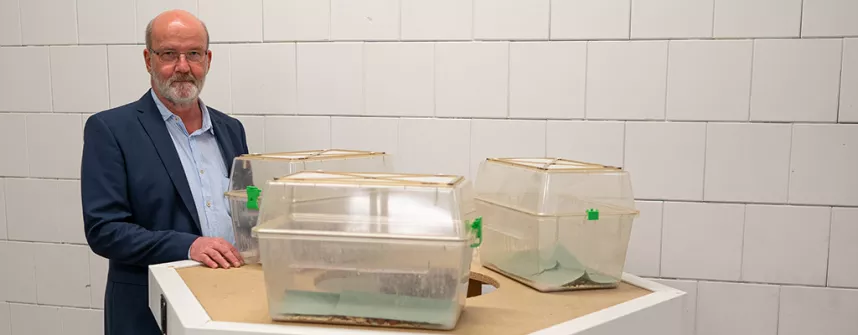Are there possible biological effects of inductive charging systems for electric cars?
January 21, 2020
Electric cars should not only absorb energy as easily as possible but should also be able to release it again when needed and feed it into the power grid – this is the vision of the "FeedbacCar" research project. Jacobs University Bremen with Dr. Alexander Lerchl, Professor of Biology and Ethics in Natural Sciences and Technology, is part of the research consortium. The scientist is investigating the possible biological effects of the technology, which is based on an inductive charging system.
The more electric cars that are registered, the greater the storage capacity of the batteries they contain. What if it could be used to absorb fluctuations in the output of renewable energies and electricity peaks? An inductive charging system should make this possible.
In this system, the energy is not transmitted via power cables but is generated using receiving and transmitting coils installed in the ground and on the vehicle. An app shows the driver the correct position of the car. The energy flow of the coils works in both directions. The vehicle can absorb energy, but can also make it available to the power grid.
The research on the biological effects of this technology is new scientific ground, they have hardly been investigated so far. Energy transfer creates a magnetic field. Unlike a laser beam, for example, this is not clearly limited; it scatters and decreases sharply with distance from the coils.
"Our task is to investigate the biological effects of these magnetic fields," says Lerchl, who can fall back on large Helmholtz coils that generate a magnetic field with a strength of 360 microtesla at 20 kHz or 85 kHz. For comparison: For high-voltage lines, the limit value for the magnetic flux density is 100 microtesla. "Thanks to this equipment, we are pioneers in research into low-frequency electric and magnetic fields," says Lerchl. His research group is currently investigating the effects of magnetic fields on various plants, insects and protozoa.
FeedbacCar (Future Electric Energy Distribution by Aggregated Clusters and Cars with Automated Response) is funded by the German Federal Ministry for the Environment, Nature Conservation, and Nuclear Safety. Project partners are Zollner Elektronik AG, Audi AG, IFAK - Institut für Automation und Kommunikation e.V. and Energie2Market GmbH. In a fleet test with several vehicles, experience is currently being gathered as to whether the vehicles are suitable for storing energy. The project is limited until the end of June 2020.
